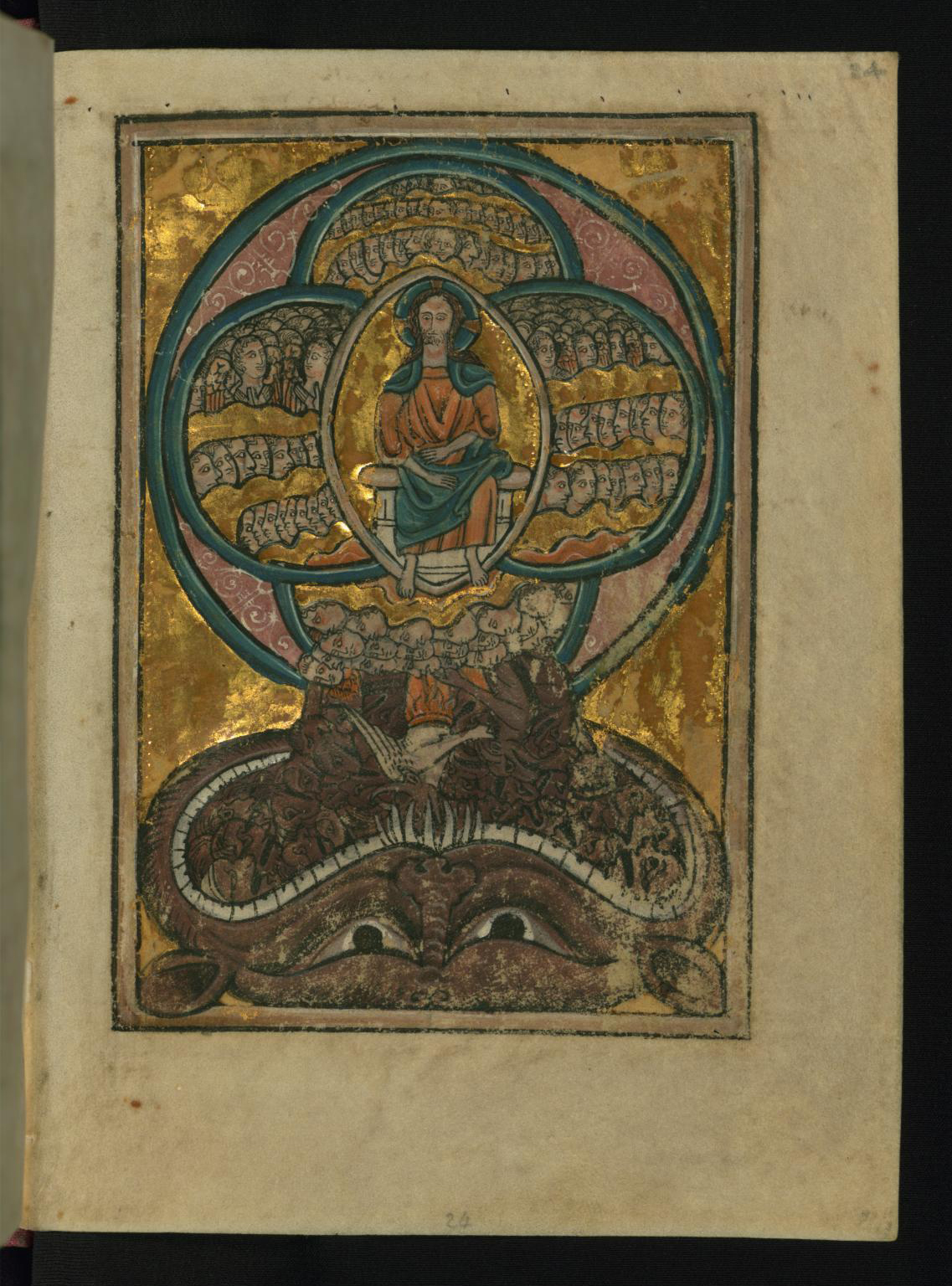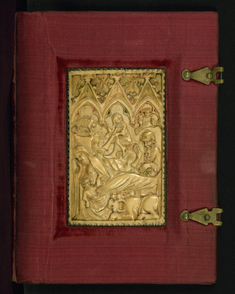The Fall of the Rebel Angels (Apocryphal)
This image from Walters manuscript w.106 depicts the fall of the rebel angels. In the center of heaven, God, cross-nimbed, with his hands in his lap, sits on a throne within a mandorla. Ranks of angels surround him in circular compartments, looking this way and that. The lowest rank of angels, to the left and right of God, is empty. The Rebel Angels are seen in the compartment below, falling headlong out of heaven and into a brown hellmouth. The jaws of the beast-headed hellmouth, with their crenellated teeth, engulf the fallen angels. As they fall, the angels become demons. Their flesh turns from white to dark brown, and their human faces become bestial, with long ears, great bulging eyes, and large grimacing jaws. Their orange wings have disappeared, to be replaced in one case by a blazing orange loincloth. Evil has been established.
Provenance
Provenance (from the French provenir, 'to come from/forth') is the chronology of the ownership, custody, or location of a historical object. Learn more about provenance at the Walters.
Léon Gruel, Paris [date and mode of acquisition unknown]; Henry Walters, Baltimore, June 6, 1903, by purchase [see The Diaries of George Lucas]; Walters Art Museum, 1931, by bequest.
Exhibitions
| 1995 | To Hell and Back: Medieval Images of the Afterworld. The Walters Art Gallery, Baltimore. |
Geographies
United Kingdom, England, Oxford (Place of Origin)
Measurements
H: 5 3/16 x W: 3 3/4 in. (13.2 x 9.5 cm)
Credit Line
Acquired by Henry Walters, 1903
Location in Museum
Not on view
Accession Number
In libraries, galleries, museums, and archives, an accession number is a unique identifier assigned to each object in the collection.
In libraries, galleries, museums, and archives, an accession number is a unique identifier assigned to each object in the collection.
W.106.24R



